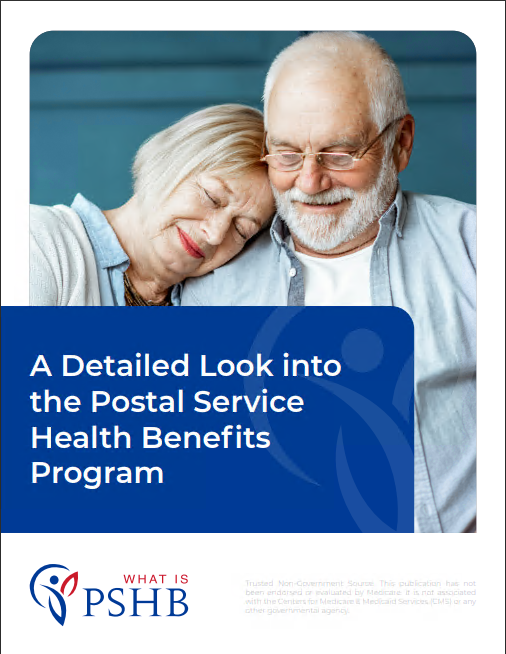Key Takeaways:
- Postal workers have options between PSHB and FEHB plans, each offering distinct advantages based on individual needs.
- Understanding the coverage differences and potential savings is crucial for choosing the most cost-effective option.
PSHB vs. FEHB – Which Health Plan Will Save You More as a Postal Worker? Here’s the Comparison
Postal workers have access to two major health insurance options: the Federal Employees Health Benefits (FEHB) program and the Postal Service Health Benefits (PSHB) program. Each plan offers unique benefits, coverage structures, and potential savings, making the decision an important one for postal workers seeking the most cost-effective and comprehensive healthcare coverage. Let’s take a closer look at how these two plans compare and what factors you should consider when deciding which is better suited for your healthcare needs and budget.
Understanding FEHB: A Reliable Option for Federal Employees
The Federal Employees Health Benefits (FEHB) program has long been the go-to option for postal workers and federal employees alike. Established in 1960, this program offers a wide variety of plans from different carriers, giving federal employees—including postal workers—substantial flexibility when selecting their health insurance. With a range of premiums and coverage options, the FEHB program caters to the diverse needs of federal workers.
FEHB offers access to multiple plan types, including Health Maintenance Organizations (HMOs) and Preferred Provider Organizations (PPOs). These plans allow for various coverage models, depending on whether you prefer lower out-of-pocket costs, specific provider access, or comprehensive care. For many postal workers, this variety and the ability to switch plans during open season have made FEHB a strong and reliable choice for decades.
What is PSHB? A New Contender for Postal Workers
The Postal Service Health Benefits (PSHB) program is a newer alternative specifically designed for postal workers. This plan became available following a change in federal policy, with a focus on providing postal employees with a more tailored healthcare experience. Unlike FEHB, which serves all federal employees, PSHB is a plan dedicated solely to postal workers, providing benefits that may more closely align with the unique demands of this workforce.
PSHB is expected to provide similar coverage options to FEHB, but with several differences that could result in cost savings for postal workers. While the specifics of PSHB are still evolving, early indications suggest that the program may offer lower premiums for some workers, while maintaining the comprehensive coverage that FEHB is known for.
Coverage Differences: PSHB vs. FEHB
One of the primary considerations when comparing PSHB and FEHB is coverage. Both programs are designed to offer a broad spectrum of benefits, including medical, dental, vision, and prescription drug coverage. However, because PSHB is tailored to postal workers, it may offer benefits that are more directly aligned with their healthcare needs.
In general, FEHB plans tend to have broader coverage options, given that they are available to a larger group of federal employees. This means that postal workers enrolled in FEHB may have access to a wider variety of providers and healthcare networks. On the other hand, PSHB’s more focused approach may offer postal workers more personalized care and potentially lower out-of-pocket costs.
That said, it’s important to review the specifics of both plans during the enrollment period. Coverage details, network availability, and out-of-pocket costs will vary depending on the specific plan you choose, and these factors can have a significant impact on your overall healthcare expenses.
Premiums and Cost-Sharing Considerations
Cost is one of the most critical factors when choosing between PSHB and FEHB. While both programs offer competitive pricing for postal workers, there are differences in how premiums and cost-sharing are structured.
FEHB premiums are shared between the government and the employee, with the government typically covering around 70-75% of the total cost. Postal workers enrolled in FEHB can also take advantage of flexible spending accounts (FSAs) to help manage out-of-pocket healthcare expenses. However, depending on the specific plan selected, premiums can vary widely, and high-deductible health plans (HDHPs) can result in significant out-of-pocket costs.
PSHB, on the other hand, is expected to offer postal workers lower premiums than those available through FEHB, which could translate into significant savings over time. Additionally, the PSHB program may introduce more favorable cost-sharing arrangements, such as lower copayments or deductibles, to further reduce the financial burden on postal employees. As the PSHB program continues to evolve, it’s essential to review updated cost information to determine how it compares to FEHB for your situation.
Flexibility and Network Access: Which Plan Offers More?
Another important factor to consider is the flexibility of each plan. FEHB offers postal workers a wide range of options, from HMOs to PPOs and High Deductible Health Plans (HDHPs). This flexibility allows workers to choose a plan that best fits their specific healthcare needs and provider preferences. Those who prefer to stick with specific doctors or hospitals can opt for a PPO, which provides broader access to out-of-network care, albeit with higher out-of-pocket costs.
PSHB may have a more limited range of plans initially, given that it’s designed exclusively for postal workers. However, the trade-off is that these plans may be more streamlined and customized to meet the typical needs of postal employees. For workers who prefer simplicity and tailored coverage, PSHB could be the better option, particularly if they don’t need the extensive network flexibility that FEHB provides.
Retirement Considerations: How Does Each Plan Affect Retirees?
One of the key concerns for postal workers nearing retirement is how their healthcare coverage will be affected. Both PSHB and FEHB are expected to provide continued coverage for retirees, but there are some notable differences in how these programs handle retirement benefits.
FEHB has long been a popular choice for retirees, allowing them to keep their health insurance into retirement as long as they meet eligibility requirements. Retirees can continue to access the same range of plans and benefits as active employees, making it a stable option for those who want consistency in their healthcare coverage.
PSHB, while still evolving, is expected to offer similar benefits for retirees. However, it may introduce additional advantages, such as lower premiums or specialized coverage options tailored to the health needs of older postal workers. As details about PSHB’s retirement coverage become clearer, it’s important for postal workers to stay informed about how it compares to FEHB in terms of cost and coverage for retirees.
Transitioning to Medicare: How Each Plan Handles Medicare Integration
For postal workers approaching Medicare eligibility, it’s essential to consider how PSHB and FEHB interact with Medicare coverage. Both programs allow for the integration of Medicare Parts A and B, which can help reduce overall healthcare costs for retirees.
In the case of FEHB, postal workers can typically use their FEHB plan as supplemental coverage once they enroll in Medicare. This can help cover costs that Medicare doesn’t, such as deductibles, copays, and services not covered by Medicare. The flexibility of FEHB plans also allows workers to choose whether or not to enroll in Medicare Part B, depending on their individual healthcare needs and financial situation.
PSHB is expected to work similarly, with plans designed to complement Medicare coverage. However, because PSHB is specifically tailored to postal workers, it may offer more streamlined integration with Medicare, potentially reducing out-of-pocket costs even further. Postal workers nearing Medicare eligibility should carefully evaluate how each plan interacts with Medicare to ensure they’re maximizing their benefits and minimizing costs.
Final Thoughts on PSHB vs. FEHB for Postal Workers
Choosing between PSHB and FEHB is a significant decision for postal workers, as both plans offer unique advantages and potential savings. While FEHB provides broader coverage options and greater flexibility, PSHB’s focus on postal workers could result in lower premiums and more tailored coverage. Ultimately, the right choice depends on your individual healthcare needs, budget, and long-term goals, particularly when it comes to retirement and Medicare integration. Take the time to review each plan’s details during open enrollment, and consider speaking with a licensed insurance agent to get personalized guidance.
Contact Information:
Email: [email protected]
Phone: 5055553456












